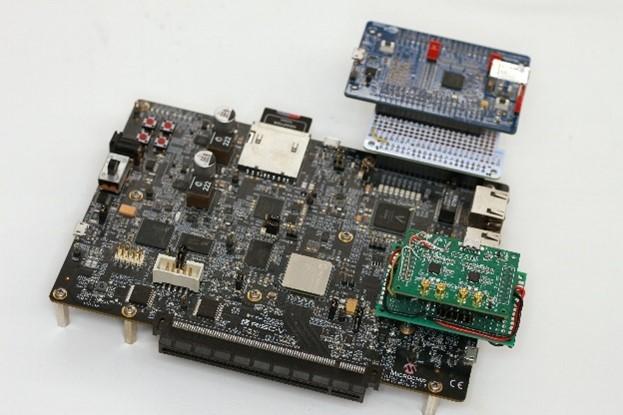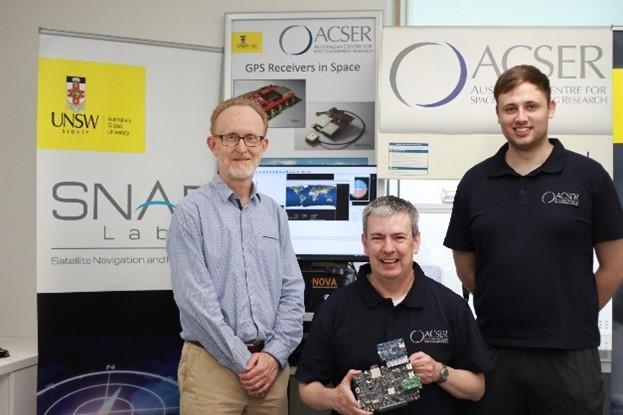An advanced GPS receiver from the University of New South Wales could play an important role in Australia’s space future.
This receiver accepts signals from two satellite systems, GPS and Galileo, across multiple frequencies. The Australian Space Agency provided funding via the International Space Investment initiative.
Upgrading an in-house product
Professor Andrew Dempster, Director of the Australian Centre for Space Engineering Research (ACSER) at the University of New South Wales, led the development of the receiver.
He says the project is an evolution of Kea, made in Australia and New Zealand. That receiver was for single-frequency GPS. Kea was one of the first locally-made products of its kind to be proven in flight. Its first mission was the UNSW-ECO cubesat.
“The idea was to take that work (on Kea) and upgrade it for this multi-frequency, multi-system solution,” Professor Dempster says.
“We needed to scale up the performance of many of the components on the boards – in particular, where the digital processors and hardware live.”
Smooth sailing ahead
The end product is an advanced receiver capable of Global Navigation Satellite System (GNSS) reflectometry. This is a remote sensing technique where signals are reflected from the Earth’s surface to study environmental conditions over land and sea, such as floods and storms.
Reflectometry is also useful for maritime planning. It can provide information about wave heights, and shows the direction and speed of wind over the ocean.
This capability benefits a wide range of industries. Examples include defence, construction, mining, logistics and agriculture. It can also provide mobile navigation services to public users.
The product can be further improved to track many aspects of space weather in the Earth’s ionosphere. This affects satellite communications used for defence, remote internet and live television broadcasts.
An Aussie advantage
ACSER’s locally-designed receiver will reduce dependencies on imported receivers. This gives Australian customers access to a more affordable product.
Meanwhile, the receiver has strong export potential. It is compatible with both the US-based Global Positioning System (GPS) and the Galileo equivalent in Europe.
“Dual-frequency GNSS receivers have been around for a long time, but dual-frequency reflectometry instruments have not,” Professor Dempster says. “Our receiver has been made much more functional and capable by using the two signals.”
“People aren’t using (reflectometry instruments) too much in space. That’s where we are hoping to do something new and original."
Ready for future missions
ACSER is looking forward to its receiver supporting upcoming satellite missions. The receiver can support these missions by providing precise positioning, timing and velocity information. It enables satellites to produce higher quality images from space with better pointing.
“We want to put the dual frequency receiver onto a constellation of satellites to monitor the ionosphere,” Professor Dempster said.
This is now possible with the completion of ACSER’s advanced receiver product.

Modular prototype dual-frequency, dual-system GNSS receiver.

Pictured (left to right): Andrew Dempster, Eamonn Glennon and Michael Rohrbach from ACSER.
Photo credit: Cheryl Brown.

